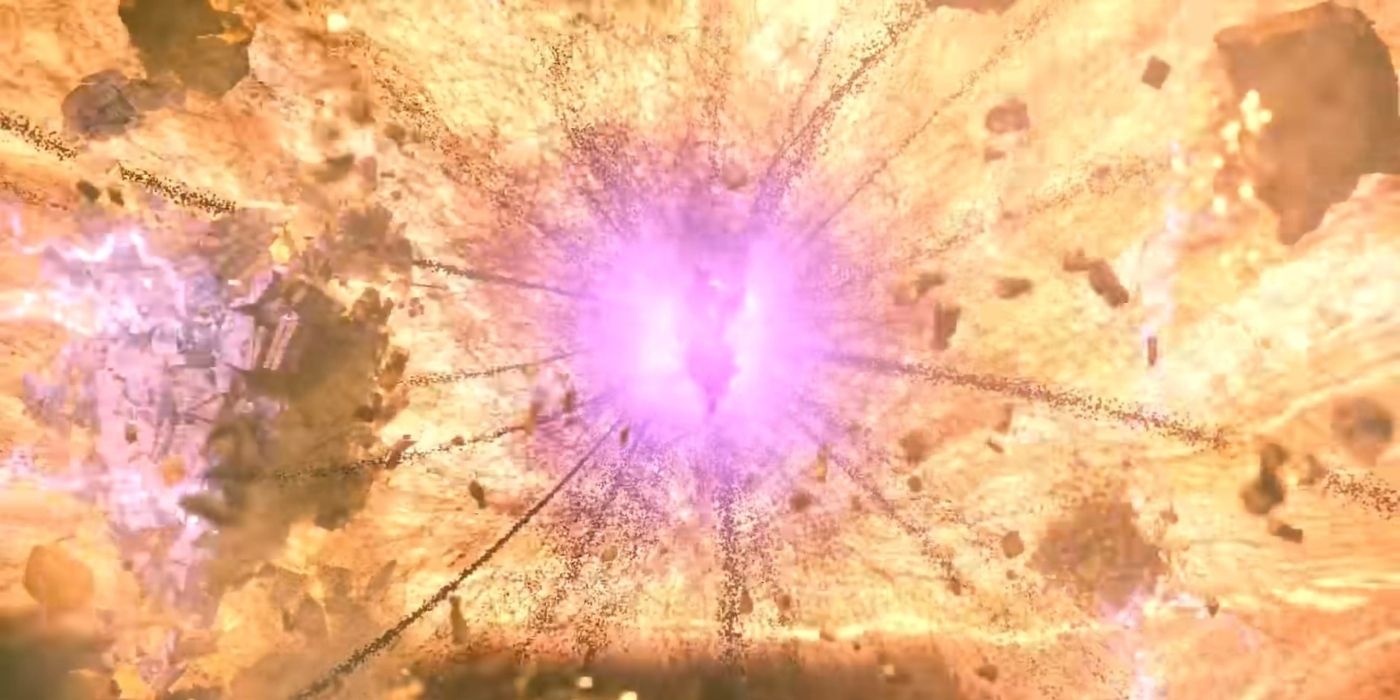
Square Enix's Final Fantasy 7 Remake is full of nuances to help guide the game's narrative, and a subtle yet important detail involves the way purple and yellow colors are woven into the fabric of the story. This article explores the role these colors play in FF7 Remake.
From tenuous facial expressions to well-timed musical cues, the FF7 Remake developers certainly put a lot of care into every inch of the game, and the same can be said about certain color choices. Many likely think of the symbolism behind Aerith's yellow flowers in FF7 Remake, for example, but there is so much more depth to the colors and what they mean.
In the game, the color yellow portrays life, hope, and rebirth. Purple embodies destruction, corruption, and possibly death. Yet they are more than just "good" and "bad." They are two sides of a whole, and each of the colors and what they epitomize not only enhances the storyline but also demonstrates the necessity of the dualities they represent - which goes beyond the two just being complementary colors.
[Warning: Spoilers for Final Fantasy 7 Remake Below]

There are notable times when each color appears. FF7 Remake's opening shows Aerith interacting with a pipe leaking green Mako energy. There's a purple light in the background, which she looks at and instantly appears frightened, just as Sephiroth's "One-Winged Angel" theme starts to play in the background. In the Sector 7 slums, a purple Enigmatic Spectre emerges when Avalanche decides not to take Cloud on its next mission. The scene plays out with the Whispers injuring Jessie, so Cloud has to go in her stead, as if the purple forces are directing how events should unfold. Purple is also associated with Jenova. It's the color of her glowing eyes, of the residue she leaves behind in the Shinra building (as opposed to the red blood in the original FF7), and of Jenova Dreamweaver.
The energy that destroys the highway leading away from Midgar is purple, too, glowing as it sucks up Cloud and the party into the battle scene with the Harbinger of Fate, which also has a purple light encased within it. Purple energy surrounds Sephiroth near the end of the game. The Shinra simulator depicts purple flowers when highlighting plans for Neo Midgar, and a purple flower is seen in President Shinra's breast pocket in a photo of him shaking hands with Mayor Domino. An interesting detail in the FF7 Remake Ultimania, translated by Twitter user aitaikimochi, notes that the coin Rufus Shinra handles prior to the fight with him has his pet, Dark Star, and a Mandragora flower on it. The Ultimania felt it necessary to add that these purple flowers symbolize "fear."
These purple flowers are contrasted by the yellow one that grow in the holy church in the Sector 5 slums - an area where the Lifestream emerges in Final Fantasy 7 Advent Children to cure Geostigma, which is a disease caused by Jenova cells tainting the Lifestream. It's interesting that Aerith and Tifa both mention these flowers represent "reunion," which Jenova cells are also associated with in FF7, and that Aerith practically forces a yellow flower onto Cloud when she first meets him, which didn't happen in the original FF7. The finale shows a bunch of yellow light flickering, particularly in the Zack and Biggs scenes - scenarios that weren't supposed to happen and now allow for a diverging sense of hope.
Almost all scenes with these colors seem to deviate from the original FF7's story in some way, and both seem to be forcing their own narrative, although the purple has negative implications and the yellow has positive ones. Purple seems to be associated with the antagonists, like Sephiroth, acting independently to achieve an unknown goal, and yellow with the protagonists actively responding to that. This back and forth is driving Remake's new script of the classic story, and this cycle of creation and destruction is further elaborated on in the explanation of Aerith's mural in FF7 Remake, where the Lifestream is drawn as a circle. The cyclical life, death, and rebirth process is a necessary and underlying theme throughout Final Fantasy 7 Remake, and these colors help represent this concept.
Source: @aitaikimochi/Twitter
from ScreenRant - Feed https://ift.tt/2ULmveS

0 Comments